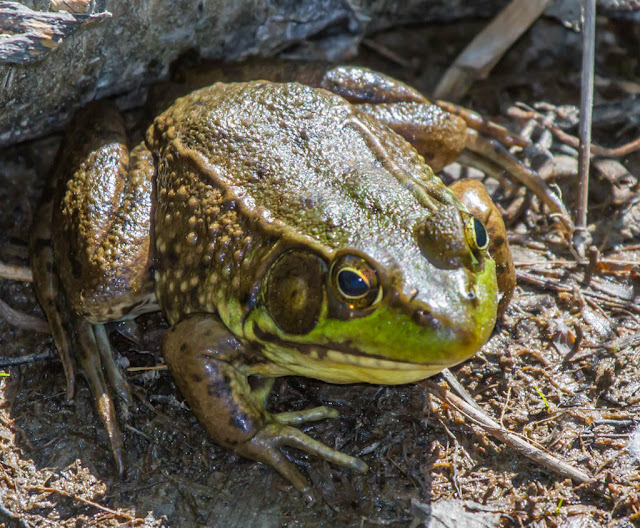Acadia National Park: June 1, 2016:
It's now 5 pm on Thursday, June 2nd. We birded and explored a new part of the park for us on a 5 mile hike this morning and this afternoon we had a nice 4 mile run on the groomed carriage trails in beautiful 55 degree, sunny, clear, and windy weather. We had several new trip dragonflies and two new trip birds (Blue-headed Vireo and Black-throated Green Warbler) with photos to follow in the next post for 6-2-16. We're off to Thurston's Lobster Pound for the 3rd straight night of lobsters and clams which we enjoy when we're in areas where we can get good seafood.
Interestingly, one third of the park's land and its carriage roads, bridges, and gate lodges were gifts from John D. Rockefeller, Jr.
Wednesday, June 1st, was a "Potpourri Day" for us. We saw squirrels, frogs, turtles, several birds (including two new trip birds: Common Eiders and Dark-eyed Juncos), deer, dragonflies, snakes, butterflies and more.
We so enjoy reading the sounds of the forest musicians with our ears. On our walks in the woods where the birds are hidden in the leafed-out foliage, we typically identify twice as many birds by ear than by eye. Though to help cement things in our brains, it is extremely helpful to actually watch a bird as it sings its songs!
Sand Beach
Some of the trails were "easy."
Others, not so much!
And some, not at all!
Red Squirrel
Green Frog
These frogs breed from May well into the summer months.
Their single-note call is a banjo-like twang.
Shelf Fungi
Female Downy Woodpecker
North America's smallest woodpecker
Woodpecker Hotel
Male Hairy Woodpecker
This species has more than 17 recognized subspecies and is considered to be the most prolific woodpeckers in North America.
The males incubate the eggs during the night while the females incubate them during the day.
Common (Eastern) Garter Snake
This common "garden snake" is amazingly cold tolerant, surviving farther north than any other North American reptile.
It is harmless, but when seized, it doesn't hesitate to bite. It is an active daytime predator, seeking out earth worms, fish, amphibians, and small mammals. In summer, large females may deliver 50 or more young.
Canadian Billboards





















No comments:
Post a Comment